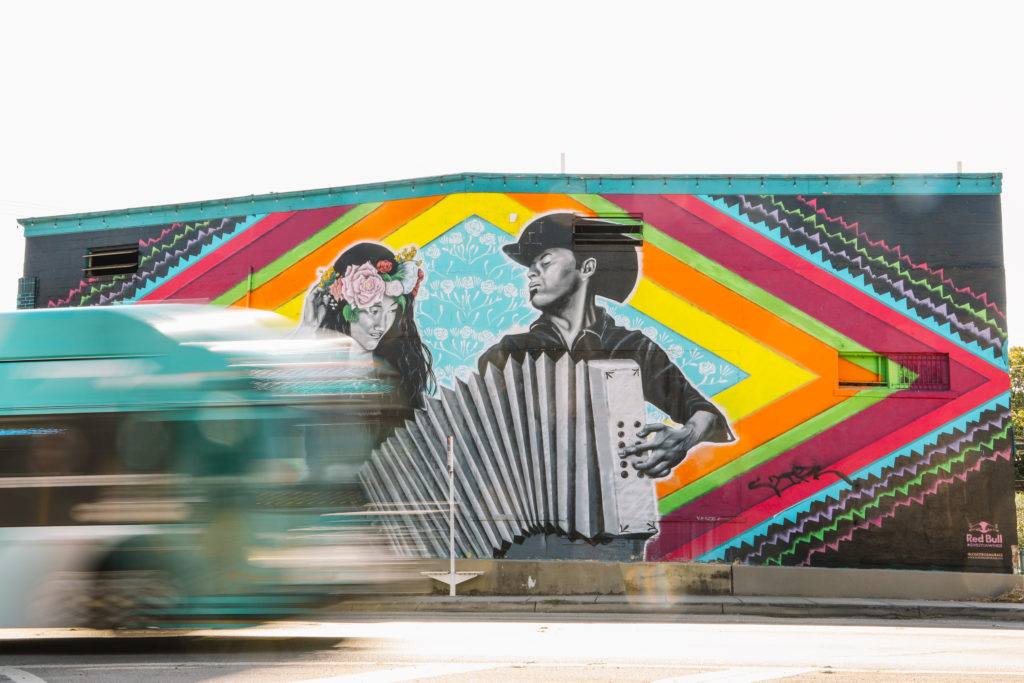In the community survey SA2020 produced, promoted, and analyzed in January-March of this year, 3,205 San Antonians shared with us their priorities for San Antonio over the next decade. “What do you most want to see maintained? What do you most want to see improved?” we asked.
Answers, of course, ran the gamut. We counted 28 themes for what San Antonians most want to see improved or changed over the next decade. (You can see more about those themes and respondents here.) Across the entire community, however, one theme rose to the top: mobility.
Of the total responses, 33% named mobility—including public transportation, traffic, micromobility options, and walkability—as their top concern in San Antonio over the next 10 years. Thirty percent of those responses specifically listed public transportation. In a city that’s projected to add another million residents by 2040, where both commute time and daily vehicle miles traveled continue to rise, and where many are dependent on public transportation, improved mobility is undeniably critical.
Of the 1,050 people who responded that mobility is a priority to them, 41% identified other areas of priority, with infrastructure, housing, education, environmental sustainability, and public safety as the top five. This tells us that that people inherently understand the interconnectivity of these areas.
This prioritization makes sense when considering how much of a lifeline public transportation is in San Antonio. In a survey completed by riders last year, VIA found that 60% of people are using VIA services to get to work. While ridership was predictably down during COVID-19 stay-at-home orders, VIA reports that this reduction wasn’t as dramatic as other cities across the country (a 45% reduction in San Antonio versus up to 80-90% in some metros across the nation). San Antonians are relying on VIA to go to work and access essential services and goods. COVID-19 has further highlighted that these San Antonians are essential workers, which means the entire community depends on VIA to get them to their jobs.

VIA understands this. Over the past 3 months, VIA turned their vans and buses into mobile hotspots for students and workers; they suspended bus fares for nearly two months; and today, they offer free rides for anyone utilizing unemployment benefits. Like many multi-sector organizations, VIA quickly responded to the needs of the community during a global pandemic.
VIA launched these initiatives despite being underfunded—even before COVID-19 reached our community. That’s in large part due to the sales tax funding; VIA receives only a half-cent of local sales tax, compared to the full cent that transit agencies in Austin, Houston, and Dallas receive. In fact, if VIA doesn’t receive new, sustainable funding, whether from a 1/8-cent tax increase or another funding stream, 35 of their 90 bus routes will be cut on January 1, 2021.
And let’s be clear about whose lives that will impact most directly.
SA2020’s community data shows that public transit use varies widely depending on where in San Antonio you live. Folks on the city’s near westside in City Council District 5, for example, use public transit (or carpool) twice as much as San Antonians who live in District 10 on the northeast side of town (20.9% vs. 10.3%). These two districts do share a similar population in folks older than 65, who also rely on VIA Trans. Data also reveals that the highest percentage of working age population with a disability (20.2%) also lives in District 5. The reduced routes will specifically impact 1,364 individuals with disabilities who currently use paratransit services and will no longer be eligible for services. In fact, the areas that show the largest populations who rely on public transit are overwhelmingly made up of Latino and Black San Antonians and have the highest populations of people with disabilities.

As the community begins to recover from COVID-19, mobility will be even more essential to making economic progress. When San Antonians return to work, start a new job, or get a professional certificate or college degree, we first have to make sure everyone can get to those places.
Our second community survey is now live. We’re asking you to share your personal needs and concerns amid COVID-19 (everything from childcare to mental health to, of course, transportation), as well as your community-wide priorities for San Antonio over the next decade. We’ll be sharing the analysis of the initial responses soon.
We know many of you prioritized mobility in our first survey earlier this year. Some of you prioritized education, economic development, community engagement, and housing. Mobility matters to each and every one of those, particularly as we recover from COVID-19. Let’s use this moment to advocate for a system of mobility that works for all of us as San Antonio’s Community Vision reads: where everyone is able to walk, ride, drive or wheel in a safe, convenient, and affordable manner to their desired destinations. Frequent and reliable mass transit services connect communities, and transportation infrastructure meets community needs.

